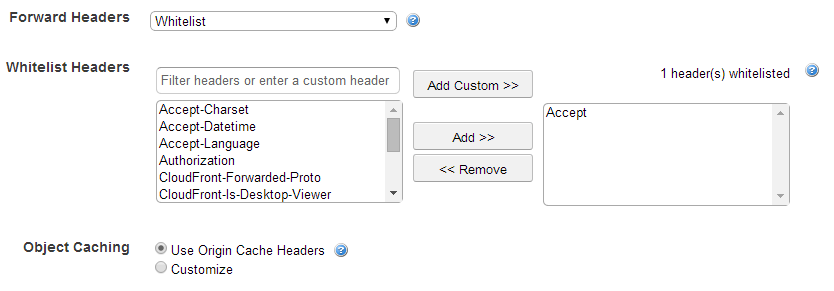WebP, content negotiation and CloudFront
AWS recently launched improvements to the CloudFront CDN service. The most important change is the option to specify more HTTP headers be part of the cache key for cached content. This lets you run CloudFront in front of apps that do sophisticated Content Negotiation. In this post, we demonstrate how to use this new power to selectively serve WebP or JPEG encoded images through CloudFront depending on client support. It is a follow-up to my previous post on Serving WebP images with ASP.NET. Combining WebP and CloudFront CDN makes your app faster because users with supported browsers get highly compressed WebP images from AWS’ fast and geo-distributed CDN.
The objective of WebP/JPEG content negotiation is to send WebP encoded images to newer browsers that support it, while falling back to JPEG for older browser without WebP support. Browsers communicate WebP support through the Accept HTTP header. If the Accept header value for a request includes image/webp, we can send WebP encoded images in responses.
Prior to the CloudFront improvements, doing WebP/JPEG content negotiation for images fronted with CloudFront CDN was not possible. That’s because CloudFront would only vary response content based on the Accept-Encoding header (and some other unrelated properties). With the new improvements, we can configure arbitrary headers for CloudFront to cache on. For WebP/JPEG content negotiation, we specify Accept in list list of headers to whitelist in the AWS CloudFront console.

Once the rest of the origin and behavior configuration is complete, we can use cURL to test that CloudFront correctly caches and serves responses based on the Accept request header:
curl -v http://abcd1234.cloudfront.net/myimageurl > /dev/null ... < HTTP/1.1 200 OK < Content-Type: image/jpeg ...
And simulating a client that supports WebP:
curl -v -H "Accept: image/webp" http://abcd1234.cloudfront.net/myimageurl > /dev/null ... < HTTP/1.1 200 OK < Content-Type: image/webp ...
Your origin server should set the Vary header to let any caches in the response-path know how they can cache, although I don’t believe it’s required to make CloudFront work. In our case, the correct Vary header value is Accept,Accept-Encoding.
That’s it! Site visitors will now be receiving compact WebP images (if their browsers support them), served by AWS CloudFront CDN.
Leave a Reply